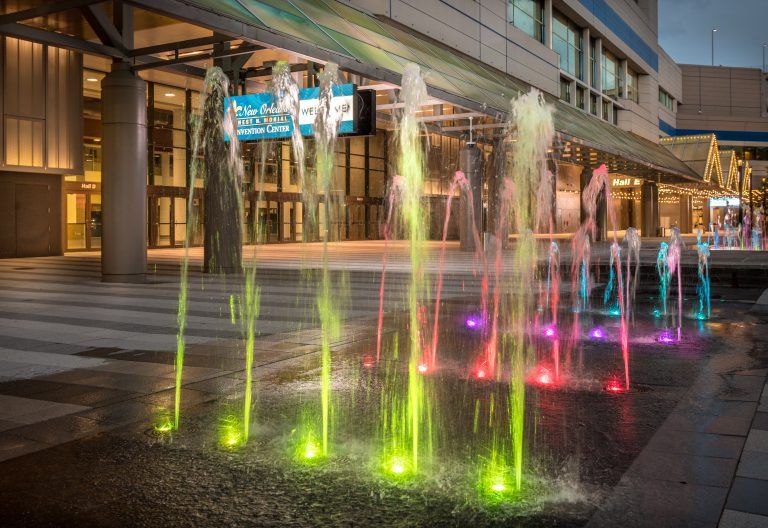Article
ARVO LIVE: Luxa Biotechnology gives update on clinical trial of RPESC technology for dry AMD
Author(s):
In a presentation during the Association for Research in Vision and Ophthalmology (ARVO) Annual Meeting, being held at the Ernest N. Morial Convention Center in New Orleans, Luxa Biotechnology offered details of a clinical trial evaluating transplantation of cells derived from adult retinal pigmented epithelium stem cells to treat dry AMD.
RPESC-RPE-4W is derived from an adult retinal pigmented epithelium stem cell (RPESC) that produces retinal pigmented epithelium (RPE) cell progeny. (Image Credit: Ernest N. Morial Convention Center)

Luxa Biotechnology today provided an update on the progress of a Phase 1/2a clinical trial evaluating transplantation of RPESC-RPE-4W to treat dry age-related macular degeneration (AMD) at the Association for Research in Vision and Ophthalmology (ARVO) Annual Meeting at the Ernest N. Morial Convention Center in New Orleans.
The panel discussion was moderated by Supriya Menezes, associate vice president of ophthalmology at Emmes, a global, full-service clinical research organization that hosted the session.
According to LuxaBio, RPESC-RPE-4W is derived from an adult retinal pigmented epithelium stem cell (RPESC) that produces retinal pigmented epithelium (RPE) cell progeny. The cell product being used in the clinical trial is a progenitor stage RPESC-RPE obtained after 4 weeks of differentiation (RPESC-RPE-4W).
The company noted the trial is being conducted at the University of Michigan Kellogg Eye Center.
“Our unique technology utilizing progenitor-stage RPE cells to replace those lost in dry AMD offers the potential to improve vision,” said Jeffrey Stern, MD, PhD, co-CEO of LuxaBio and co-founder of NSCI. “This trial represents a close collaboration of LuxaBio, the Kellogg Eye Center, the Cedars-Sinai Biomanufacturing Center, the National Eye Institute, and Emmes, our contract research organization and sponsor of the panel session at ARVO.”
Laboratory studies of RPESC-derived RPE cells demonstrated they could perform the critical repertoire of cell functions carried out by normal RPE cells, including trophic factor release and phagocytosis. Sub-retinal implantation in an animal model of retinal degeneration showed that RPESC-RPE-4W cells engraft into the RPE layer.
Transplanted RPESC-RPE-4W provided durable preservation of RPE cell functions and supported overlying photoreceptor cells, resulting in vision rescue that was maintained for the life of the animal. RPESC-RPE-4W has significant safety attributes in animal models, including lack of tumor formation.
Adult RPESC are obtained from eyes donated to eye banks. A single donor produces sufficient RPESC-RPE-4W cells for several hundred doses. The RPESC-RPE-4W cell product is manufactured at the Cedars Sinai Biomanufacturing Center in Los Angeles and the formulated doses are shipped to the clinical site for implantation.
The trial is co-sponsored by the National Eye Institute of the National Institutes of Health under a Regenerative Medicine Innovation Project cooperative agreement.
Newsletter
Don’t miss out—get Ophthalmology Times updates on the latest clinical advancements and expert interviews, straight to your inbox.




